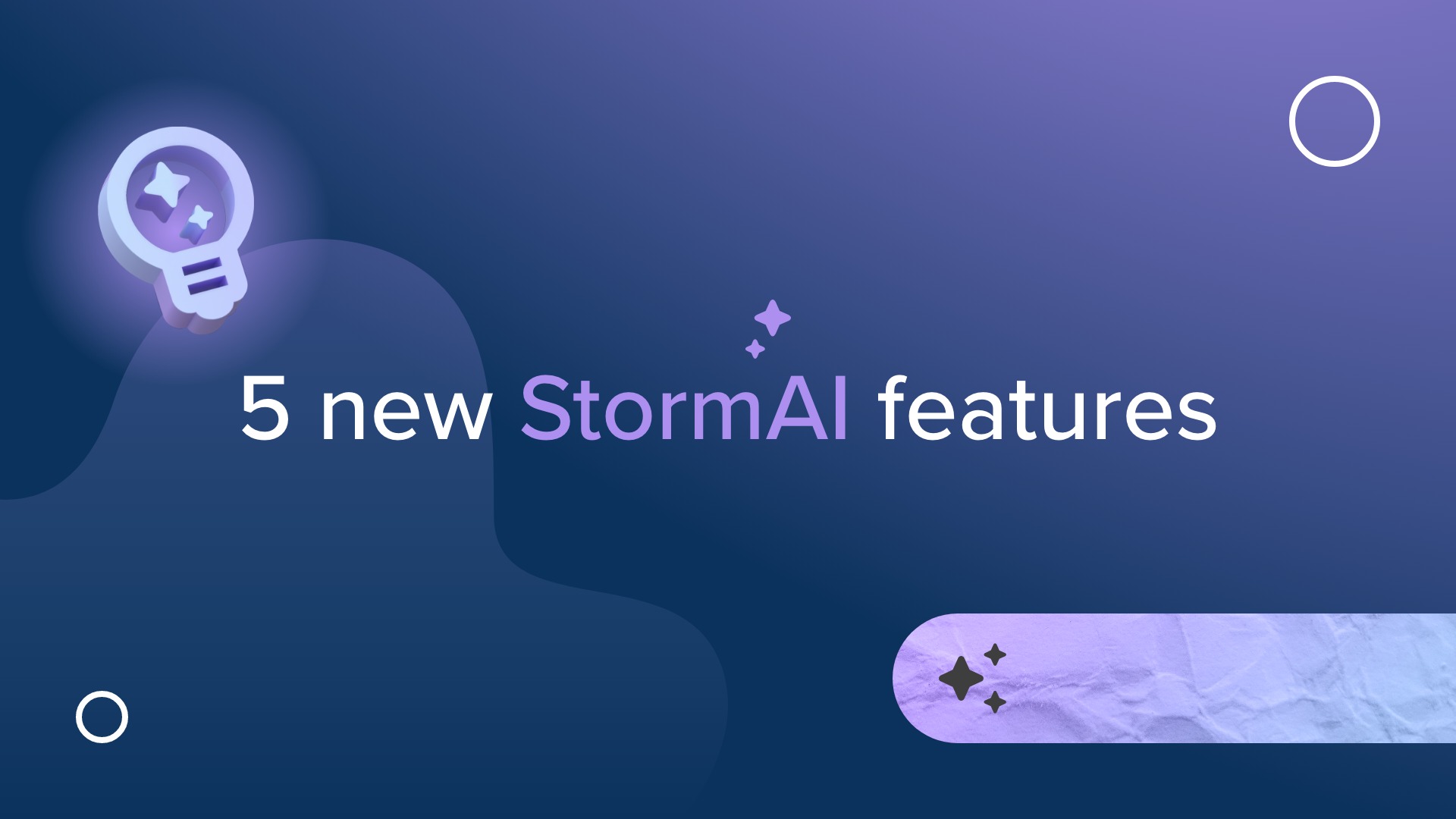Distributed Teamwork and Its Impact on Collaboration
A few years back, the idea of working remotely was entirely foreign to many of us. Since then — thanks in large part to public health orders around the world stemming from the ongoing COVID-19 pandemic — the business landscape has shifted dramatically.
What was once considered a luxury reserved for cutting-edge businesses and Silicon Valley tech start-ups has become a daily reality for millions around the world.
This recent shift in where we work has also had a huge impact on how we work.
Along the way, the Stormboard blog has taken a deep dive into the ongoing evolution of the workplace, examining newly in vogue concepts such as the Hybrid Workplace Model and Asynchronous Collaboration, and their impact on how we work.
One thing we may not have mentioned though, are some of the nuances that come with these new workplace models.
One such example is the Distributed Team, or Distributed Teamwork. On the surface, it appears to be synonymous with remote work, but there are a few key differences that separate the two.
What is Distributed Teamwork?
In many ways, the concept of a distributed team is the same as a remote team — essentially, employees are not in an office.
The difference here is all about workplace structure. Remote teams are generally thought of as employees working from home (whether temporary, hybrid, or permanent), but usually with some sort of access to an office or shared workspace — often with the executive team working out of a physical Headquarters of some sort.
Distributed teams on the other hand, are distributed in the literal sense of the word. For example, a CEO may be based in Toronto, with a VP of Sales in Houston, a Chief Marketing Officer in San Francisco, and CTO in Stockholm.
Regardless of the locale, colleagues may work together for years without the chance for a face-to-face meeting, whether it is a random run-in at the water cooler on a rare office day, coincidently while out for dinner in the same city, or at the yearly holiday party.
With remote work on the rise, a larger shift to more distributed teams can also be expected in the coming years, thanks to broader acceptance of work from home models by both employees and business leaders alike.
But despite the recent increase in popularity (and evidence that it is the preferred workplace model) the challenges of remote work are well-documented.
The same can be said about distributed teams, where the same challenges may be even further magnified by physical distance.
A lack of in-person interaction (not to mention time zone differences) can breed a work environment short on trust, company culture, and productivity.
So how can your organization avoid falling victim to these challenges? By ensuring you have the right mix of 3 key components: people, processes, and tools.
People
It’s true, having the right people in place to ensure an efficient workplace isn’t exactly a ground-breaking concept or business hack.
However, distributed teams have a significant advantage when it comes to people: the ability to go out and find the best fit, regardless of location. Where some remote workforces may try to recruit within the same general geographical region as the HQ, a truly distributed team is not bound by distance from the office.
The advantage of working with distributed teams (geographical flexibility) can also be one of the biggest hurdles. Having that physical disconnect between team members can make it difficult to build rapport, communicate effectively, and set consistent expectations across the team.
The solution to these challenges starts at the top. Executives are the leaders, and should be setting examples for the entire team.
This can be accomplished in two ways: by being both more and less accessible than ever.
It may seem counter-intuitive, but in a distributed (or remote) team, it can be extremely easy for the lines of personal and professional to blur. The “always-on” mindset can be a huge barrier to success.
Executives should be expected to set boundaries and lead by example — making sure they set consistent hours, and are offline on evenings and weekends (when the rest of the team is). This simple change will discourage the ‘always-on’ mindset in employees — and provide executives with the breaks they need as well.
On the other hand, in order for a distributed team to work together effectively, executives must also ensure that they are ready and willing to collaborate and communicate when it is time to work.
In short, having the right people is not enough on its own. Leadership must take the reins of their distributed teams and lead by example to ensure everyone is on the same page.
Processes
Process is another key factor that can be easy to overlook or dismiss as ‘standard.’ This can be especially true for businesses that are just starting the transition to a distributed model, or are bringing in people new to remote work.
For many people around the world, remote work and distributed teams are still newer concepts. Employees are typically used to being able to pop their head into an office down the hall, gather in the break room, or stop a passer-by to casually discuss things like processes and procedures.
In a distributed team, this can be more challenging — even the best remote inter-office chat tools can feel inauthentic or awkward.
The simple solution to this challenge is to keep your procedures as basic (and repeatable!) as possible.
The reality is that not everything can be basic or simple, so distributed teams must also ensure that each process is highly specific, globally agreed upon, and concisely documented.
The good news here is that the challenges above also present opportunity. While working remotely eliminates that person-to-person contact in the office, it also eliminates many barriers to collaboration — especially if your processes are facilitated by the right tools.
Tools
The concept of digital transformation has been on a meteoric rise alongside remote and distributed teamwork over the past few years, and with it, the focus has moved from the boardroom to the digital world.
Traditional tools of the trade are falling by the wayside in favor of digital alternatives. One such victim, the trusty whiteboard, is becoming quickly extinct in the business world.
Once a staple of the conference room, more and more businesses are turning to a digital whiteboard — and for good reason.
As teams and organizations have evolved and experimented with remote and distributed workforces, one of the earliest (and largest) problems encountered was a sudden drop in collaboration efficiency.
The challenge with remote collaboration is that, for many of us, it’s a foreign concept. We are used to gathering boardrooms, jotting notes on whiteboards, and scribbling meeting minutes to get everyone on the same page.
What distributed teams were among the first to realize though, is that there is a better way to collaborate. With purpose-built collaboration tools like Stormboard, the challenges of distributed teamwork can become your organization’s advantages.
Whether your distributed team is trying to remove barriers to communication, increase project efficiency, or find a platform to promote asynchronous collaboration, a digital whiteboard can be the tool that ties together your people and processes for a better way to work.
New Year, New Way to Work
2022 is shaping to be a year of innovation and digital transformation.
Distributed teamwork is going to be front and centre as businesses around the world look for the right workplace model for them.
Putting together the right people, processes, and tools can make all the difference and help ensure organizational success.
If you’d like to see how Stormboard fits into your 2022 pans, Book a Demo with one of our experts today, or sign up for a free account now and see for yourself why over 1 million people around the globe are using us to Work Better Together.












